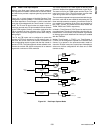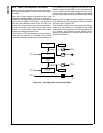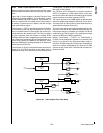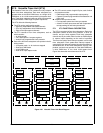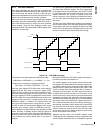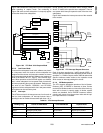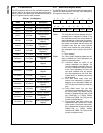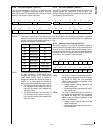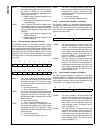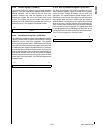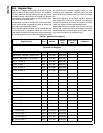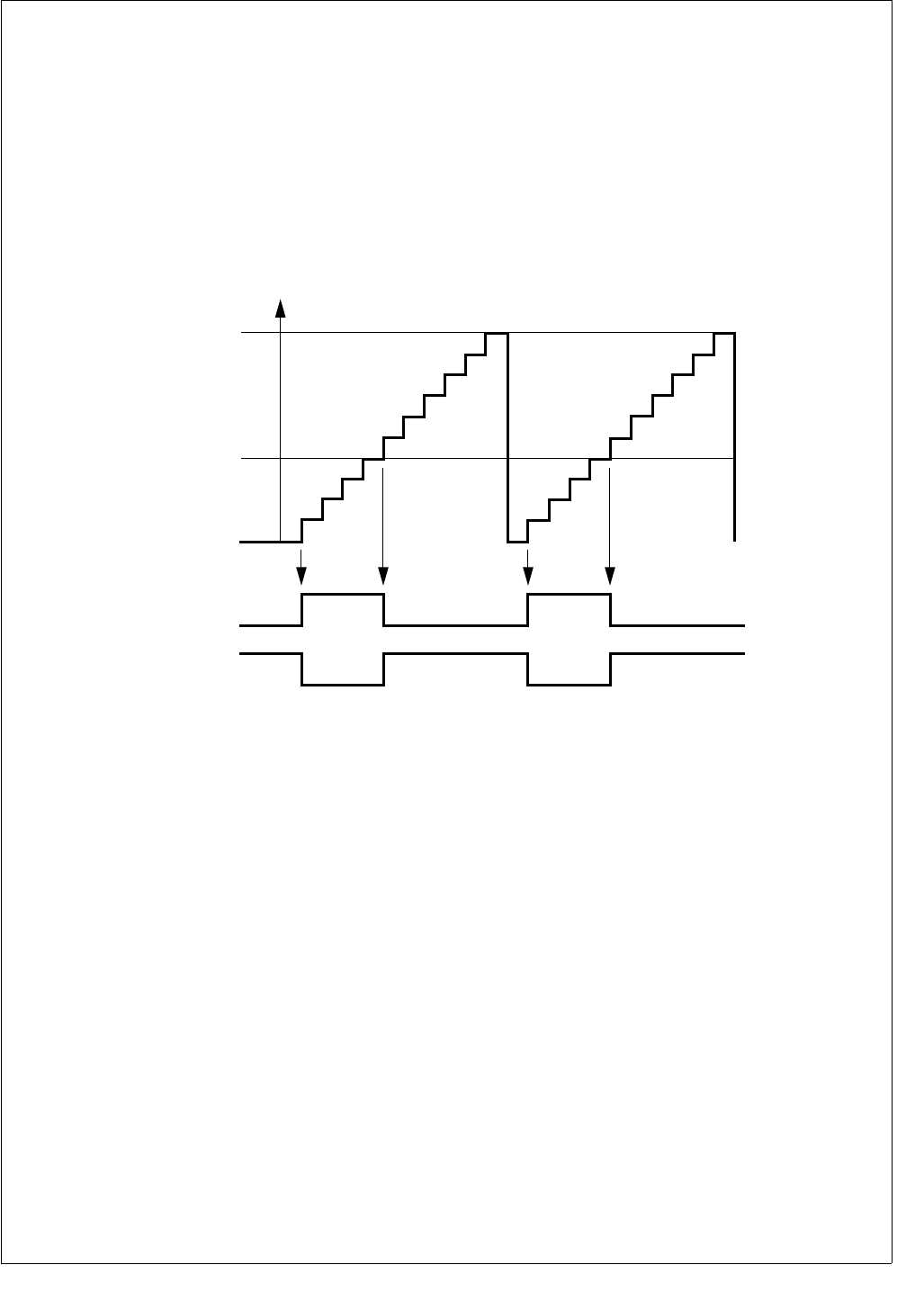
207 www.national.com
CP3BT26
27.1.1 Dual 8-bit PWM Mode
Each timer subsystem may be configured to generate two
fully independent PWM waveforms on the respective TIOx
pins. In this mode, the counter COUNTx is split and oper-
ates as two independent 8-bit counters. Each counter incre-
ments at the rate determined by the clock prescaler.
Each of the two 8-bit counters may be started and stopped
separately using the corresponding TxRUN bits. Once ei-
ther of the two 8-bit timers is running, the clock prescaler
starts counting. Once the clock prescaler counter value
matches the value of the associated CxPRSC register field,
COUNTx is incremented.
The period of the PWM output waveform is determined by
the value of the PERCAPx register. The TIOx output starts
at the default value as programmed in the IOxCTL.PxPOL
bit. Once the counter value reaches the value of the period
register PERCAPx, the counter is cleared on the next
counter increment. On the following increment from 00h to
01h, the TIOx output will change to the opposite of the de-
fault value.
The duty cycle of the PWM output waveform is controlled by
the DTYCAPx register value. Once the counter value reach-
es the value of the duty cycle register DTYCAPx, the PWM
output TIOx changes back to its default value on the next
counter increment. Figure 105 illustrates this concept.
Figure 105. VTU PWM Generation
The period time is determined by the following formula:
PWM Period = (PERCAPx + 1) × (CxPRSC + 1) × T
CLK
The duty cycle in percent is calculated as follows:
Duty Cycle = (DTYCAPx / (PERCAPx + 1)) × 100
If the duty cycle register (DTYCAPx) holds a value which is
greater than the value held in the period register (PER-
CAPx) the TIOx output will remain at the opposite of its de-
fault value which corresponds to a duty cycle of 100%. If the
duty cycle register (DTYCAPx) register holds a value of 00h,
the TIOx output will remain at the default value which corre-
sponds to a duty cycle of 0%, in which case the value in the
PERCAPx register is irrelevant. This scheme allows the
duty cycle to be programmed in a range from 0% to 100%.
In order to allow fully synchronized updates of the period
and duty cycle compare values, the PERCAPx and DTY-
CAPx registers are double buffered when operating in PWM
mode. Therefore, if software writes to either the period or
duty cycle register while either of the two PWM channels is
enabled, the new value will not take effect until the counter
value matches the previous period value or the timer is
stopped.
Reading the PERCAPx or DTYCAPx register will always re-
turn the most recent value written to it.
The counter registers can be written if both 8-bit counters
are stopped. This allows software to preset the counters be-
fore starting, which can be used to generate PWM output
waveforms with a phase shift relative to each other. If the
counter is written with a value other than 00h, it will start in-
crementing from that value. The TIOx output will remain at
its default value until the first 00h to 01h transition of the
counter value occurs. If the counter is preset to values which
are less than or equal to the value held in the period register
(PERCAPx) the counter will count up until a match between
the counter value and the PERCAPx register value occurs.
The counter will then be cleared and continue counting up.
Alternatively, the counter may be written with a value which
is greater than the value held in the period register. In that
case the counter will count up to FFh, then roll over to 00h.
In any case, the TIOx pin always changes its state at the
00h to 01h transition of the counter.
Software may only write to the COUNTx register if both
TxRUN bits of a timer subsystem are clear. Any writes to the
counter register while either timer is running will be ignored.
TIOx (PxPOL = 0)
DTYCAPx
TxRUN = 1
COUNTx
00
01
02
03
04
05
06
07
08
09
0A
00
01
02
03
04
05
06
07
08
09
0A
TIOx (PxPOL = 1)
PERCAPx
DS089



